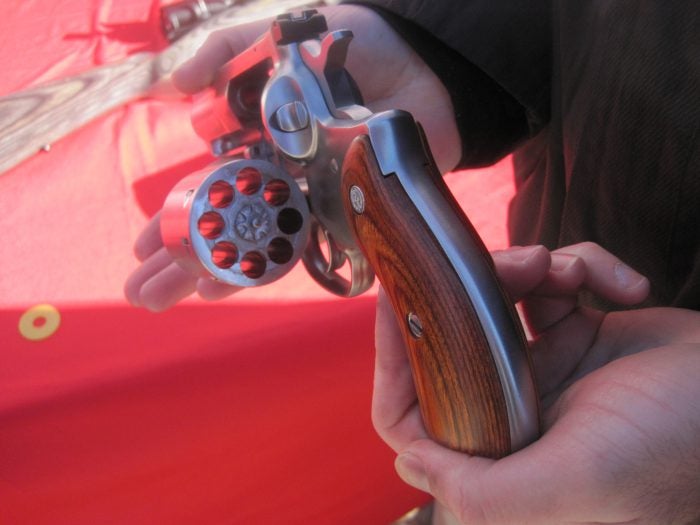...can you explain to me in simple terms why can I be convinced that it is "safe" to store or carry cocked and locked, and have faith that it will not misfire? In my mind it seems like it could go off if it was dropped or if the piece holding the pin broke unexpectedly.
CAN a failure that causes an XD that is carried chambered to self-discharge - without the trigger willfully pulled by the shooter - occur?
Definitely.
Is it
LIKELY?
No, it is
highly UNlikely.
The only times I've seen a modern duty/defensive-grade autopistol self-discharge over the span of my 10 years in this sport/hobby so-far were two highly abnormal instances.
In one, the firearm discharged after having returned-to-battery from a reload that the shooter executed: this instance was actually recorded and witnessed by several other shooters - and luckily, the discharged round went into the berm behind the target. The root cause, after the gun was examined by a highly competent on-site (the inspection was immediate) gunsmith (REF:
Concealed carry. Chambered or not chambered?), was that it got just too dirty, in just the right spot.
The other was a mechanical defect (weird and unexpected breakage).
The last one was of unknown cause.
Unfortunately,
@BENXD40TACTICAL , in my experience, I cannot convince anyone of this: either to carry with the round chambered or not. More than likely, I've come to learn, that those who are posting about this issue are simply looking for reasons to support their own view.
As I noted in the referenced thread above, for those who carry in "Condition 1" - the round-in-the-chamber crowd - it's absolutely irrefutable that, with all else held equal the draw-to-shoot via "Condition3/without a round chambered" is simply
NOT "as fast." C3 is absolutely and definitively not "just as fast," and a simple stopwatch or shot-timer will readily demonstrate this -
ABSOLUTE- fact.
Similarly, for those who desire to carry "C3/without a round chambered," it's also undeniable that without a round chambered, the gun simply cannot discharge a bullet from its muzzle. No matter how unlikely the C1 crowd maintains that such an event is not likely to happen, it is nevertheless still within the realm of possibility - and actually
has happened. Therefore, for those who desire to carry C3 as an extra measure of safety, their argument is just as logical and just as sound as for those who carry C1 on the basis of reactionary speed.
The reasons that each of us may choose to self-validate our preferences can be numerous, and their validity can stretch from more than reasonable to all but ridiculous.
To me, that's not worth worrying about, and does nothing but to muddy the waters.
To me, the two absolutes I presented above are all that really need to be considered or said. And to me, both of these reasons are equally valid.
A lot of shooters would suggest that "training" ameliorates the fears of those who insist on C3 carry. To me, this doesn't make much sense. To me, all that training reinforces is the difference in timing that separates C1/C3. Good training - everything from flat-range to Force-on-Force - has shown me that in the civilian, legal concealed-carry, reactive defensive shooting context, there's a deficit of time and/or initiative that I can never recover with C3 carry.
To me, the way to gain the necessary confidence in your concealed-carry handgun not "going off" is via experience and understanding/knowledge.
Knowledge in how your chosen firearms work - so that you can gain confidence in knowing that mechanical problems are rare (the same thought goes into if you are afraid to fly - in comparing the safety systems and statistics to, for example, driving). With the XD platform, understand the roles of the drop safety, the striker safety, and the grip safety and how they interplay.
Gain first-hand experience for yourself by staging the firearm in your chosen mode/state of carry/storage (dry/cleared of live-ammo, if-necessary), so that you can see for yourself, over time, that the gun will not spontaneously/without external cause let go of the firing pin/hammer and cause the weapon to "fire." Maybe at first for a few hours (i.e. range time: this will of-course be done with live ammo). Maybe then for a day. Then for several days to a week. Then maybe a month, and then several months.....
Three of my four XDms have been loaded virtually 24/7 since the day they were bought - two of which are closing in on their 10th anniversary. None of the three have ever dropped the striker without my actuating the trigger (note: cumulatively, I have close to 80,000 - no, I didn't add a zero by mistake, that's eighty thousand - live-fire rounds thorugh these weapons.






